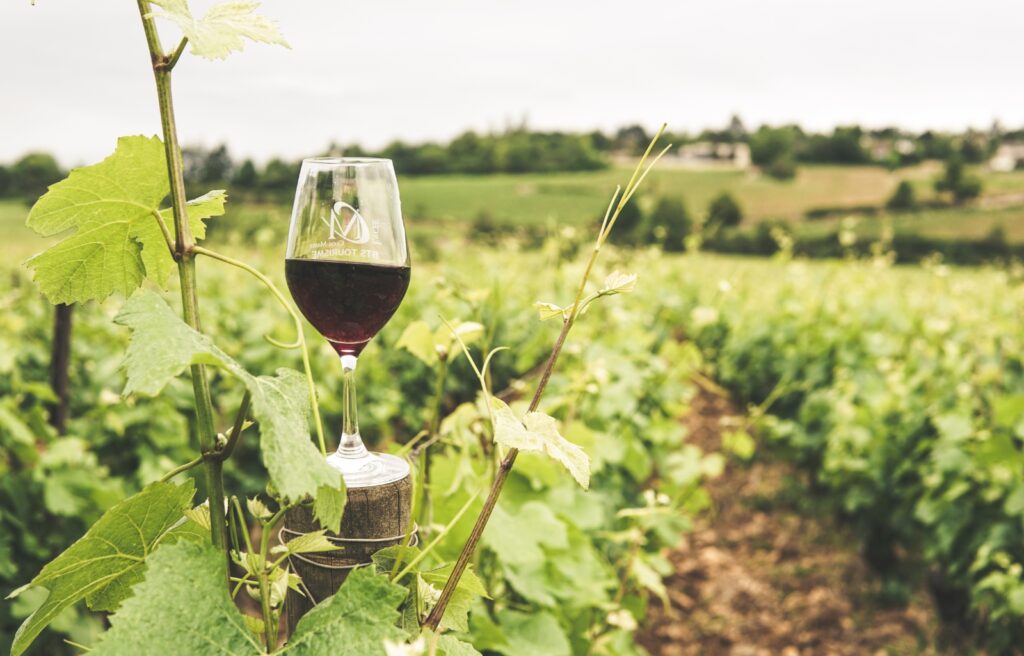Choosing the perfect Aussie wine can be a bit of a head-scratcher, right? We know the feeling all too well, but here’s a corker for you: Australia churns out around 1.3 billion litres of wine every year! This guide’s got your back, helping you get your head around Australian wines and pick them like a pro.
So, grab a glass and settle in for some top-notch tips!
Key Takeaways
- Australia produces a staggering 1.3 billion litres of wine each year, offering a wide range of varieties and styles across its diverse regions like Western Australia, South Australia, Victoria, New South Wales, and Tasmania. Each region showcases unique wines due to their distinct climates and soil compositions.
- Visitors can enjoy unforgettable experiences in each wine region, from the historic vineyards of South Australia’s Barossa Valley, known for its Shiraz, to the cool-climate wonders of Tasmania, perfect for sparkling wines and aromatic whites. Engaging activities include winery tours, cellar door tastings, gourmet dining amidst scenic views, and exploring wine routes like the Tamar Valley or East Coast Wine Trail.
- Sustainability is at the heart of Australian winemaking, with many vineyards embracing organic practices, renewable energy sources like solar power, and water conservation techniques. This commitment ensures that you are not only tasting high-quality wines but also supporting eco-friendly initiatives.
- The climate significantly influences the types of wines produced in different regions. Warm areas excel in bold reds like Cabernet Sauvignon, and cooler regions are celebrated for elegant Chardonnay and Pinot Noir. Understanding these influences enhances appreciation for Australian wines.
- Food pairings play a crucial role in experiencing Australian wines to their fullest potential. Whether it’s matching rich Shiraz with grilled meats or enjoying a crisp Riesling with spicy Asian cuisine, there’s an array of local produce perfect for pairing with regional wines, which elevates the tasting experience.

The Different Wine Regions in Australia
Australia boasts diverse wine regions, such as Western Australia, South Australia, Victoria, New South Wales, and Tasmania. Each region offers unique terroir and distinctive wine styles that reflect their climates and soil compositions.
Western Australia
We explore the vast landscapes of Western Australia, a region renowned for its diverse wine production. This part of Australia offers a rich tapestry of flavours and aromas, thanks to its unique climate and soil composition.
Known for producing some of the country’s most prestigious wines, Western Australia’s wine regions, like Margaret River, stand out on the global stage. Travellers to these areas can expect an unforgettable winery experience, indulging in top-tier Australian wines amidst breathtaking scenery.
Our journey through Australian wine regions next takes us to South Australia, home to world-famous labels and historic vineyards.
South Australia
South Australia has become a renowned wine region due to its diverse landscapes and ideal climate for grape cultivation. The state is home to world-class wineries and vineyards, making it a must-visit destination for wine enthusiasts.
With regions like Barossa Valley, Clare Valley, and McLaren Vale, South Australia offers an array of wine experiences that showcase the unique terroir and exceptional varietals found in this area.
Visitors can indulge in wine tastings, cellar door tours, and immersive vineyard experiences while enjoying the stunning natural beauty of the region.
The diverse microclimates in South Australia contribute to producing a wide range of premium wines, including Shiraz, Cabernet Sauvignon, Riesling, and Grenache. Each sub-region within South Australia offers distinct characteristics that add depth to the overall winemaking landscape.
Victoria
Victoria boasts some of Australia’s most renowned wine regions, including the Yarra Valley and Mornington Peninsula. These coastal regions produce exceptional cool-climate wines, especially Chardonnay and Pinot Noir.
Visitors can explore picturesque vineyards and cellar doors while experiencing the region’s unique wine culture. The diversity of landscapes in Victoria contributes to a wide range of wine styles, making it an essential destination for wine enthusiasts seeking distinct flavours and varieties.
Moving on from Victoria, let’s delve into New South Wales’ thriving wine regions that offer a distinctive taste of Australian winemaking.
New South Wales
New South Wales boasts some of Australia’s oldest and most iconic wine regions, including the renowned Hunter Valley. The region’s diverse climate and soil composition produce a wide range of wine varieties, from crisp Semillon to rich Shiraz.
Visitors can enjoy scenic vineyard tours, cellar door tastings, and gourmet dining experiences in picturesque settings across the state.
The welcoming atmosphere at New South Wales wineries makes it easy for tourists to immerse themselves in the local wine culture while enjoying stunning landscapes. Exploring this dynamic region offers an unforgettable taste of Australian winemaking heritage and innovation.
Tasmania
Tasmania boasts a cool climate, which is perfect for producing high-quality sparkling wines and aromatic white varieties such as Riesling and Gewürztraminer. The island’s diverse topography and ancient soils contribute to the unique flavours of its wines.
Many wineries in Tasmania offer cellar-door experiences, providing an opportunity to taste their award-winning cool-climate wines while enjoying picturesque vineyard views.
Additionally, visitors can explore the Tamar Valley Wine Route or the East Coast Wine Trail for an immersive wine-tasting experience, complemented by stunning landscapes. Furthermore, Tasmania is well-known for its boutique wineries that focus on sustainable practices, contributing to the preservation of the island’s pristine natural environment.
Key Factors That Affect Australian Wine
The climate, soil composition, and grape varieties play crucial roles in shaping the unique characteristics of Australian wines, leading to diverse and distinct wine profiles across different regions.
Winemakers carefully consider these factors to produce wines that reflect the terroir and embody the essence of each wine region.
Climate
Australia’s diverse climate plays a crucial role in shaping the distinct flavours of its wines. The warm and dry conditions in regions such as Barossa Valley and McLaren Vale are perfect for producing bold Shiraz and Cabernet Sauvignon with rich, ripe fruit flavours.
Conversely, cooler climates like those found in Yarra Valley and Tasmania allow for the production of elegant Pinot Noir and Chardonnay, known for their delicate aromas and vibrant acidity.
Understanding the impact of climate on wine production can enhance your appreciation of Australian wines as you explore different regions.
Soil composition
Transitioning from the impact of climate, we now turn our attention to soil composition. The diverse wine regions in Australia are shaped by a variety of soil types and compositions, each contributing unique characteristics to the grapes grown in their respective areas.
This variation plays a key role in shaping the flavour profiles and qualities of Australian wines. As you explore the different wine regions, pay attention to how specific soil compositions influence the taste and aroma of the wines produced there.
Australian wineries boast an array of soils ranging from ancient limestone formations to nutrient-rich volcanic soils, all influencing vine growth and grape development. These varying soil types contribute distinct mineral nuances that can be tasted in Australian wines, making each region’s product truly unique.
Grape varieties
Australia is home to a diverse range of grape varieties, each contributing to the country’s rich winemaking history. Shiraz, known for its bold and spicy characteristics, is a popular red wine variety grown in regions like Barossa Valley and McLaren Vale.
Chardonnay, with its versatile flavours ranging from citrus to tropical fruits, thrives in cool climate areas such as Margaret River and Yarra Valley. Cabernet Sauvignon is another prominent red grape variety cultivated in regions like Coonawarra and Margaret River, renowned for its deep colour and robust tannins.
Pinot Noir, favoured for its elegant profile and light-bodied nature, finds success in cooler areas like Tasmania and Victoria’s Mornington Peninsula. Finally, Riesling shines in regions like Clare Valley and Eden Valley, celebrated for its vibrant acidity and aromatic qualities.
The Best Wine Regions in Australia
Barossa Valley, Margaret River, McLaren Vale, Hunter Valley, and Yarra Valley boast breathtaking landscapes and renowned wineries. These regions offer diverse wine experiences and are a must-visit for any wine enthusiast travelling through Australia.
Barossa Valley
Barossa Valley, located in South Australia, offers a picturesque landscape of rolling hills and vineyards. It is renowned for its full-bodied Shiraz, but it also produces exceptional Cabernet Sauvignon and Grenache wines.
Visitors can explore the valley’s historic wineries with guided tours or enjoy wine tastings in charming cellar doors. The region hosts food and wine events throughout the year, providing an opportunity to savour local produce while taking in the stunning scenery.
Visitors to Barossa Valley can indulge in gourmet experiences at its acclaimed restaurants and cafes. Additionally, they can embark on scenic walks through the vineyards or join cycling tours to fully immerse themselves in the area’s natural beauty.
Margaret River
Moving on from the rich reds of Barossa Valley, let’s explore the stunning wine region of Margaret River. Located in Western Australia, this region is renowned for its premium wineries and picturesque vineyards.
Visitors can enjoy a wide variety of wines here, including world-class Cabernet Sauvignon and Chardonnay. The mild maritime climate and unique soil composition make Margaret River an ideal location for producing high-quality wines that truly capture the essence of the region.
Encompassing breathtaking landscapes and offering exceptional wine tastings, Margaret River provides an unforgettable experience for wine enthusiasts. With a focus on sustainable practices and a commitment to quality, this region continues to be celebrated as one of Australia’s finest wine destinations.
McLaren Vale
McLaren Vale is known for its Mediterranean climate, which contributes to the production of high-quality Shiraz and Grenache wines. Visitors can enjoy a range of winery experiences, from boutique cellars to large estates, offering tastings and tours.
The region also boasts stunning landscapes with rolling hills and vineyard views, making it a must-visit destination for wine lovers.
Exploring McLaren Vale offers an authentic taste of Australian winemaking history and culture. Whether you’re seeking unique wine varieties or simply want to soak in the picturesque scenery, this diverse region has something special to offer every tourist or traveller visiting Australia.
Hunter Valley
Hunter Valley offers a unique wine experience with its lush vineyards and historic wineries. Visitors can explore the picturesque landscape, indulge in wine tastings, and enjoy gourmet dining at the region’s renowned restaurants.
The Hunter Valley Wine Country is famous for its Semillon and Shiraz varieties, making it a must-visit destination for wine enthusiasts seeking distinct Australian wine experiences.
The Hunter Valley also features delightful boutique accommodations, tranquil hot air balloon rides over the vineyards, and relaxing spa treatments at luxurious retreats. As one of Australia’s oldest wine regions, Hunter Valley boasts a rich cultural heritage that adds depth to the overall visitor experience.
Yarra Valley
After exploring the delights of Hunter Valley, a visit to Yarra Valley is a must for those seeking an enchanting wine experience. Nestled in Victoria, this region boasts world-renowned wineries and picturesque vineyards that offer a perfect combination of breathtaking views and exceptional wines.
Visitors can take part in immersive cellar door experiences at family-owned wineries, indulge in delectable food pairings, and even embark on hot-air balloon rides over the stunning landscape.
One of the unique aspects of Yarra Valley’s wine production is its cool climate, which gives rise to elegant Chardonnays and Pinot Noirs. While visiting Yarra Valley, make sure to explore the valley’s rich history through guided wine tours and tastings offered by passionate winemakers who are eager to share their knowledge with visitors.

Popular Australian Wine Varieties
Australian winemakers produce a diverse range of popular wine varieties, including Shiraz, Chardonnay, Cabernet Sauvignon, Pinot Noir, and Riesling. These wines showcase the rich flavours and unique characteristics that Australian vineyards have to offer.
Shiraz
Shiraz, also known as Syrah in other parts of the world, is one of the most popular and versatile grape varieties grown across various Australian wine regions. It thrives in diverse climates, producing rich, full-bodied red wines with bold flavours such as blackberry, plum, and pepper.
Shiraz from Barossa Valley is renowned for its intense fruitiness and spicy notes, while Margaret River offers a more elegant and balanced style. McLaren Vale’s Shiraz typically exhibits a combination of dark fruits with chocolate and coffee undertones.
Hunter Valley’s warm climate produces softer tannins, making their Shiraz wines approachable at an early age.
A visit to Australia would not be complete without tasting the different expressions of Shiraz across its wine regions. Whether you prefer a robust or more refined style, each region offers a unique experience that showcases the versatility and quality of this iconic Australian wine variety.
Chardonnay
Chardonnay, the most widely planted white grape variety in Australia, thrives in various wine regions across the country. Its adaptability to different climates and soils gives rise to a diverse range of styles, from light and zesty to rich and buttery.
When visiting Australian wineries, exploring Chardonnay offerings can provide an intriguing journey through the versatility of this varietal. Whether you’re sipping on a crisp, cool-climate Chardonnay from the Yarra Valley or indulging in a full-bodied example from Margaret River, each glass tells a unique story shaped by its regional characteristics.
Australian wineries continue to innovate with Chardonnay production, offering visitors an exciting opportunity to experience their take on this classic grape variety. Not only can you savour exceptional Chardonnay wines at cellar doors, but you can also gain insight into sustainable vineyard practices that contribute to the quality of these wines.
Cabernet Sauvignon
Cabernet Sauvignon is one of the most widely planted grape varieties in Australia. It thrives in various regions, producing bold red wines with rich flavours of dark fruit, cedar, and herbaceous notes.
Many wineries in South Australia’s Coonawarra and Western Australia’s Margaret River are known for their exceptional Cabernet Sauvignon.
The diverse climate and soil compositions across Australian wine regions contribute to the unique characteristics of Cabernet Sauvignon. Visitors can explore cellar doors and vineyards to experience firsthand the different expressions of this popular varietal, often paired with hearty dishes such as grilled steak or aged cheese for a memorable tasting experience.
Pinot Noir
Pinot Noir is a popular red wine variety in Australia, known for its delicate and smooth characteristics. It thrives in cooler climates, making it a standout choice from regions like Victoria and Tasmania.
The wine offers ripe cherry and earthy notes, with a silky texture that pairs excellently with duck or mushroom dishes.
Wineries across the Yarra Valley and Mornington Peninsula are renowned for their exceptional Pinot Noir production. Visitors can enjoy tastings at these picturesque vineyards while soaking in the stunning landscapes of these beautiful Australian wine regions.
Riesling
Riesling is a versatile white wine variety that thrives in various Australian wine regions. Its crisp acidity and range of styles make it a popular choice for both casual sipping and elegant dining.
Rieslings from regions like Clare Valley and Eden Valley in South Australia are known for their vibrant citrus flavours, while those from Tasmania offer a more delicate profile with floral notes.
When visiting Australian wineries, be sure to try the Riesling wines to experience the diversity and quality this varietal has to offer.
In addition, Rieslings from Western Australia’s Great Southern region showcase unique characteristics due to the maritime climate, producing wines with zesty lime and green apple flavours.
Tips for Enjoying and Buying Australian Wine
Explore the ageing potential of Australian wines to savour their flavour complexity. Pair your wine with the right food to enhance your tasting experience.
Ageing potential
When it comes to Australian wines, understanding their ageing potential can enhance your wine-tasting experience. Many Australian wines, particularly reds like Shiraz and Cabernet Sauvignon, are known for their ability to improve with age.
These wines often develop more complex flavours and aromas over time, making them a delightful choice for those looking to explore the depth of Australian winemaking.
Understanding the ageing potential of Australian wines allows us to appreciate the unique journey each bottle takes from vineyard to glass. As you explore the diverse wine regions of Australia, keep an eye out for renowned wineries that offer aged vintages for a truly unforgettable tasting experience.
Food pairings
When considering food pairings with Australian wines, it’s essential to match the flavours of the dish with the characteristics of the wine. For instance, pairing a bold Shiraz from Barossa Valley with grilled meats or rich stews enhances both the food and wine experience.
Similarly, a crisp Chardonnay from Margaret River complements seafood dishes such as prawns and grilled fish exceptionally well. When exploring Victoria’s Yarra Valley wines, consider pairing Pinot Noir with earthy mushroom risotto for a delightful culinary experience.
By understanding the flavour profiles of Australian wines and experimenting with different food combinations, tourists can elevate their wine-tasting experiences during their visit to these diverse wine regions.
In addition to traditional meat and seafood pairings, vegetarian options also abound in Australian wine regions. For example, matching Riesling from Tasmania with spicy Asian cuisine or vegetable stir-fries showcases how versatile these wines are when paired thoughtfully.
Sustainability in wine production
Australian wineries prioritise sustainability in their wine production, focusing on environmentally friendly practices to preserve the land for future generations. By implementing organic and biodynamic farming methods, they minimise the use of synthetic pesticides and fertilisers, promoting healthier ecosystems within their vineyards.
Many wineries also harness renewable energy sources, such as solar power, and practice water conservation techniques to reduce their environmental impact. Additionally, some Australian wine regions have achieved certification for sustainable viticulture, showcasing their commitment to producing high-quality wines while caring for the environment.
Moving on from sustainability in wine production, let’s explore non-alcoholic wine options available in Australia that cater to those looking for a unique tasting experience without consuming alcohol.
Non-alcoholic wine options
After considering sustainability in wine production, it’s worth noting that there are non-alcoholic wine options available in Australia. These alcohol-free alternatives are perfect for those who want to enjoy the flavours of Australian wine without consuming alcohol.
They offer a range of varieties, including Chardonnay, Shiraz, and Riesling, providing an opportunity for everyone to experience the unique taste of Australian wines regardless of their preference for alcohol.
For those seeking a break from traditional wines or looking to explore new and diverse flavours during their visit to Australian wineries, these non-alcoholic options offer an exciting alternative.
Explore Wine Regions of Australia
Explore the diverse wine regions of Australia and discover the unique characteristics that make them stand out. Immerse yourself in the rich history and culture of Australian winemaking as you visit renowned wineries and vineyards.
Whether you’re a wine aficionado or a novice, there’s an unforgettable experience waiting for you in Australia’s stunning wine country. From Western Australia to Tasmania, each region offers its own distinct flavours, creating an unparalleled adventure for every wine enthusiast.
Unearth new favourites and savour the essence of Australian wines as you embark on this extraordinary journey through some of the world’s most captivating landscapes.



